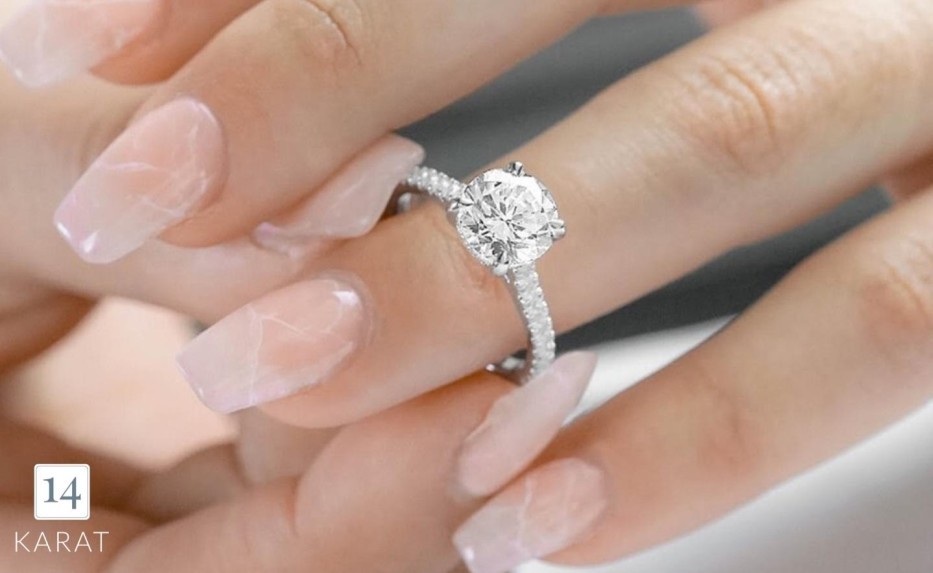Lab-grown diamonds are growing in popularity. Lab-created diamonds are chemically the same as mined diamonds; the only difference is their origin. They have the same chemical and physical makeup as a diamond grown under the Earth’s surface, but rather than curating naturally, these diamonds are created in a lab with cutting-edge technology that is able to simulate the natural growing process.
If you’re looking for a 14 karat diamond, but don’t want to break your budget, a lab-grown diamond may be a great option for you. Our team at 14 Karat Omaha is here to explain what exactly a lab-grown diamond is, how they’re made and some things to consider when deciding between lab-grown or mined.
How are lab-grown diamonds made?
The process is identical to how mined diamonds are formed. Diamonds are naturally located about 100 miles beneath the Earth’s surface. When carbon dioxide is exposed to heat exceeding 2,200 degrees Fahrenheit and a pressure of 727,000 lbs per square inch, diamonds begin to form. They are then transported to the Earth’s surface through volcanic eruptions and are able to be mined.
Lab-grown diamonds are created in one of two methods, either High Pressure-High Temperature (HPHT) or Chemical Vapor Deposition (CVD). In HPHT, diamonds are created using a manufacturing process with the belt press, the cubic press or the split-sphere press. Once a small diamond seed is produced, it is placed into carbon. When exposed to these temperatures and pressures, the carbon melts and begins to form a diamond around the seed.
In CVD, a diamond seed is produced the same way the HPHT diamond seeds are, but instead of being placed in carbon, they’re put in a sealed chamber and heated to 1472 degrees Fahrenheit. Different carbon-rich gasses, such as methane, are added to the chamber and ionized into plasma. The iodization breaks the bonds between molecules in the gasses, and carbon heeds to the seed, causing the diamond seed to crystalize.
Certification and grading
The grading begins by sending the diamonds to a certification lab, such as the Gemological Institute of America (GIA). Experts use the four Cs of diamonds to determine the grade. Several gemologists will grade the diamond, and the final grade is determined by comparing their different individual grades. Lab-grown diamonds are graded in the same way as mined diamonds. The naked eye will not be able to tell the difference between mined and lab-grown diamonds, but a trained professional can.
Things to consider when choosing lab-grown or mined
It takes a long time for a mined diamond to get from where it’s mined, to where it’s cut, to where it’s graded and finally where it’s set in its piece of jewelry. This is a long and expensive process. Lab-grown diamonds are cheaper because they don’t have to travel as far to be placed into jewelry. A huge benefit is knowing the exact origin of your diamond.
Another benefit is the impact on the environment. It takes less energy to create a diamond than it does to mine them. When deciding on what diamond to choose, it all comes down to personal opinion. Some people will always choose the mined diamond because they know the trade-in value will always be significant. As the lab continues to grow better diamonds, it’s likely these diamonds will depreciate in value over time so we are unable to know their worth later on.
Visit your 14 karat diamond experts
Diamonds represent love. Whether you’re choosing a 14 karat diamond grown naturally or in a lab, the one you buy will always have a special value to you. You may even be able to get a larger diamond within your budget by choosing a lab-grown diamond. Our experts can help you find the perfect engagement ring or piece of jewelry. Visit us today!
 14 Karat
14 Karat

Comments